There has been work going on at the white brick and tile clad building at the corner of Elm and S. Washington in REOtown. I am hoping it is not going to be more surface parking for the church, but that seems to be what they are working on as the building itself is full of junk, has broken windows, and they are not working on the building. Down the street the new record store seems to fit right in, and the coffee shop at South Street and S Washington has been painted and looks to be opening soon. Also they have installed some nice looking brick and wood at the entrance of the building being renovated across from the BWL. Also they still gutting the building[old pool hall] at Barnes Ave for the appliance store, and also at that corner Speedwagon has been closed all together for over a month. No sign of anything going on at the sub-station site, I guess they went with the short wall with the iron fencing and plaza above the river. If I look at it without emotion, it's OK, and I hope it does lead to more people using that park. I think I will able to resist peaking through to look at the rigging, I agree that the sorter wall will be less looming than a 40 foot tall wall, it does need to hide most of the rigging is what I'm hoping.
One thing to note out of the April 24th Council packet is that Summit Street Development is requesting a special land use permit for the land south of Oakland, north of May St, west of Prudden and east of the RR tracks (this is where the apartments built from shipping containers were proposed). There are no renderings or site plan but it does say that they plan to construct 522 units and that the buildings may be up to 10 floors. This is intriguing, I'll be interested in seeing more detailed plans.
I have been wondering about that space since I have been back in Lansing. It sort of looks like an an abandoned trailer park with only the street lights left standing. So they were going to build apartments from shipping containers? I think it may have been a good thing that did not happen. They are building steel Quonset type buildings for housing in a Detroit neighborhood that look interesting, but I really can't see steel shipping container homes as fitting in here. I look forward to seeing what will be built there.
Back before Hepler turned the old Prudden building into Motor Wheel Lofts there were a couple of old warehouse buildings near the Oakland side of the site, they had a fire at some point and were abandoned for awhile before being demolished in the early 2000's:
On a side note, a previous renovation to the MW Lofts building itself had added modern mirror glass windows. I think it was intended to be offices but it was never completed and sat abandoned for awhile before the loft renovation happened.
At some later point they did the curbs and lighting that you see now in anticipation of an expanded parking lot for the never-occupied offices in the Prudden Tech Center. Then in 2014 they announced plans for the shipping container apartments: Building outside the box, with boxes
Now it appears that the shipping container apartment proposal is dead and there's this new, larger proposal.
No, not totally empty, but the largest chunk of the space in the middle has never been occupied. The state was close to leasing all the available space in that building within the past few years and apparently the deal fell through essentially because Hepler was being stubborn. According to it's listing there's 115,000 sq ft available out of the building's total 133,308 sq ft.
Thank you, this clears it up for me. My older brother worked a whole summer patching the roof of the Motor Wheel building back in the 60's. He had a great tan that summer. It is great to see that photo, to remember what the building looked like, although it was brick faced back in the 60's. I see that the container based building was more interesting than I was thinking. I was picturing the containers all set about the parking lot like a trailer park.
Thank you for the post. I am impressed at how nice it looks inside. This house went up so fast, and I think many parts were pre-fabricated off site. I was thinking Habitat for Humanity might have been building this house, it is interesting to hear that it is a private company with a big plan doing this. I really like the idea of simple housing, I am hoping to see the building painted and landscaped soon, then it will fit in to the neighborhood a bit better. I wonder where they are going next. There are lots of missing teeth along the streets of REOtown it would be so cool to see them filled in with new housing. It would be good to also have a program that helped people fix up the existing homes. There are some that must be among the oldest houses in town in the area, and some really big nice old houses too.
I don't want to be a downer here, but I'd rather not see houses like that built in Lansing neighborhoods. I agree, the inside looks nice and I don't mind simple housing, but this has a post foundation and plywood for siding. It looks like a hunting shack, not something that should be built in the city.
I have to some what agree, I am hoping they doll it up a bit, I think it is OK for some areas that may never see anything built on the empty lots. I know that we are not like Detroit in that we will recover our population to it's high point so one day these lots will be redeveloped perhaps. So maybe we could contact this company to offer some advice on the design, some windows in the front, maybe clap board or cedar shingle siding would not add too much to the cost and make it look less shack like!
Comments
There has been work going on at the white brick and tile clad building at the corner of Elm and S. Washington in REOtown. I am hoping it is not going to be more surface parking for the church, but that seems to be what they are working on as the building itself is full of junk, has broken windows, and they are not working on the building. Down the street the new record store seems to fit right in, and the coffee shop at South Street and S Washington has been painted and looks to be opening soon. Also they have installed some nice looking brick and wood at the entrance of the building being renovated across from the BWL. Also they still gutting the building[old pool hall] at Barnes Ave for the appliance store, and also at that corner Speedwagon has been closed all together for over a month. No sign of anything going on at the sub-station site, I guess they went with the short wall with the iron fencing and plaza above the river. If I look at it without emotion, it's OK, and I hope it does lead to more people using that park. I think I will able to resist peaking through to look at the rigging, I agree that the sorter wall will be less looming than a 40 foot tall wall, it does need to hide most of the rigging is what I'm hoping.
One thing to note out of the April 24th Council packet is that Summit Street Development is requesting a special land use permit for the land south of Oakland, north of May St, west of Prudden and east of the RR tracks (this is where the apartments built from shipping containers were proposed). There are no renderings or site plan but it does say that they plan to construct 522 units and that the buildings may be up to 10 floors. This is intriguing, I'll be interested in seeing more detailed plans.
I have been wondering about that space since I have been back in Lansing. It sort of looks like an an abandoned trailer park with only the street lights left standing. So they were going to build apartments from shipping containers? I think it may have been a good thing that did not happen. They are building steel Quonset type buildings for housing in a Detroit neighborhood that look interesting, but I really can't see steel shipping container homes as fitting in here. I look forward to seeing what will be built there.
Some background...
Back before Hepler turned the old Prudden building into Motor Wheel Lofts there were a couple of old warehouse buildings near the Oakland side of the site, they had a fire at some point and were abandoned for awhile before being demolished in the early 2000's:
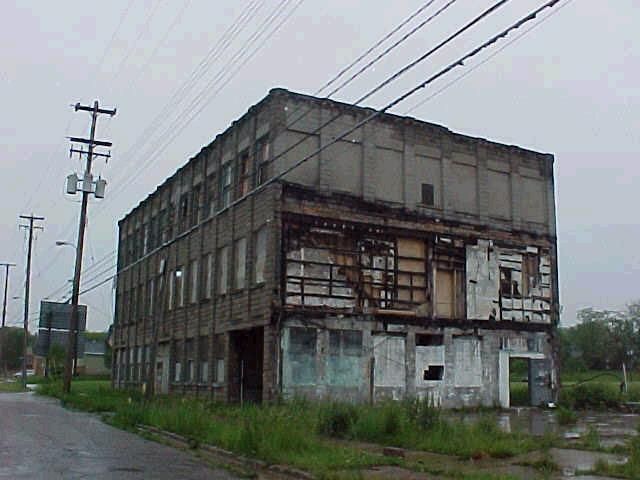
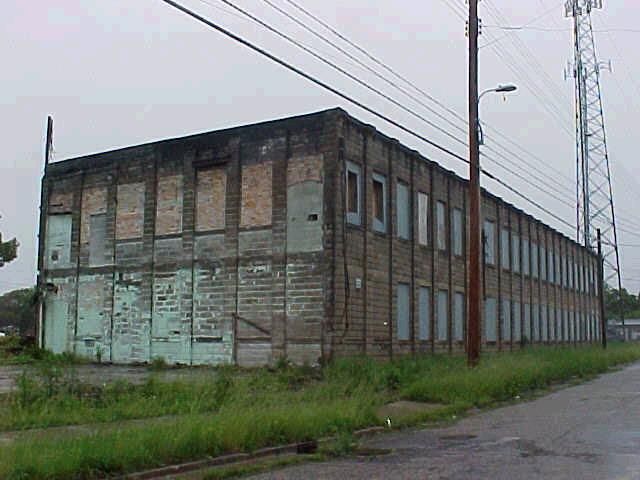
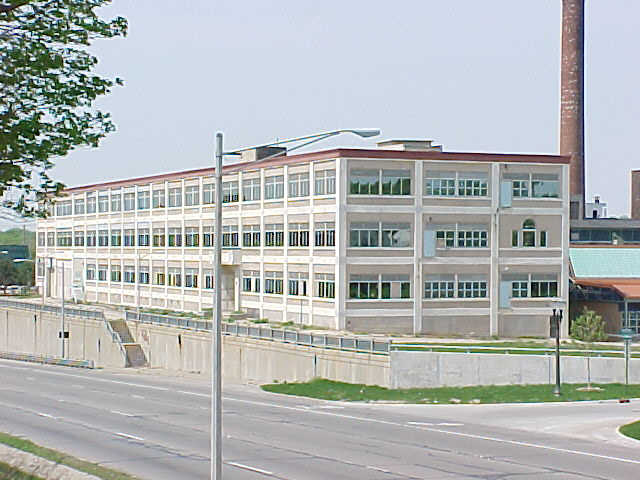
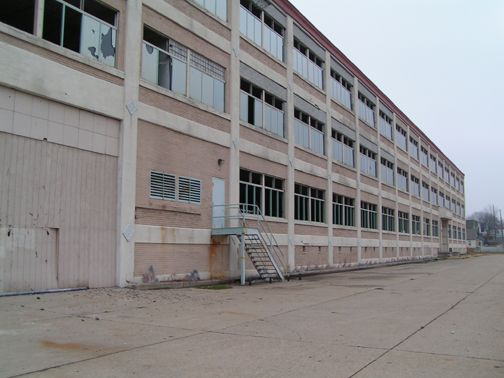
On a side note, a previous renovation to the MW Lofts building itself had added modern mirror glass windows. I think it was intended to be offices but it was never completed and sat abandoned for awhile before the loft renovation happened.
At some later point they did the curbs and lighting that you see now in anticipation of an expanded parking lot for the never-occupied offices in the Prudden Tech Center. Then in 2014 they announced plans for the shipping container apartments: Building outside the box, with boxes
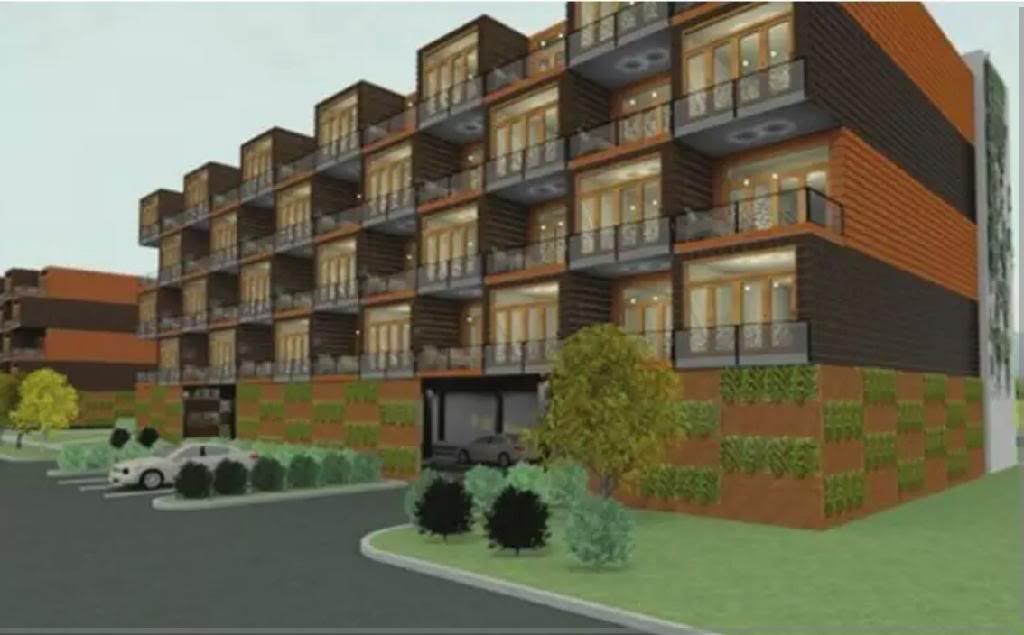
Now it appears that the shipping container apartment proposal is dead and there's this new, larger proposal.
No, not totally empty, but the largest chunk of the space in the middle has never been occupied. The state was close to leasing all the available space in that building within the past few years and apparently the deal fell through essentially because Hepler was being stubborn. According to it's listing there's 115,000 sq ft available out of the building's total 133,308 sq ft.
Thank you, this clears it up for me. My older brother worked a whole summer patching the roof of the Motor Wheel building back in the 60's. He had a great tan that summer. It is great to see that photo, to remember what the building looked like, although it was brick faced back in the 60's. I see that the container based building was more interesting than I was thinking. I was picturing the containers all set about the parking lot like a trailer park.
It is great to hear about the Michigan Ave under the bridge project is getting underway, anything would be better than what it's like now.
Thank you for the post. I am impressed at how nice it looks inside. This house went up so fast, and I think many parts were pre-fabricated off site. I was thinking Habitat for Humanity might have been building this house, it is interesting to hear that it is a private company with a big plan doing this. I really like the idea of simple housing, I am hoping to see the building painted and landscaped soon, then it will fit in to the neighborhood a bit better. I wonder where they are going next. There are lots of missing teeth along the streets of REOtown it would be so cool to see them filled in with new housing. It would be good to also have a program that helped people fix up the existing homes. There are some that must be among the oldest houses in town in the area, and some really big nice old houses too.
I don't want to be a downer here, but I'd rather not see houses like that built in Lansing neighborhoods. I agree, the inside looks nice and I don't mind simple housing, but this has a post foundation and plywood for siding. It looks like a hunting shack, not something that should be built in the city.
I have to some what agree, I am hoping they doll it up a bit, I think it is OK for some areas that may never see anything built on the empty lots. I know that we are not like Detroit in that we will recover our population to it's high point so one day these lots will be redeveloped perhaps. So maybe we could contact this company to offer some advice on the design, some windows in the front, maybe clap board or cedar shingle siding would not add too much to the cost and make it look less shack like!